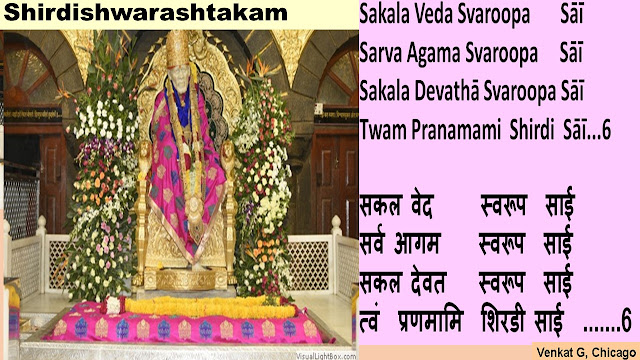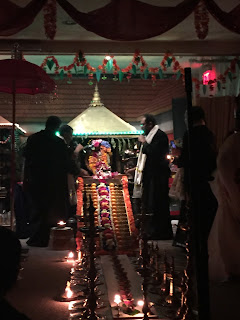Sai Bhajans on 23rd in Chicago
Blissful 23rd Bhajan
————————-
What is so special about number 23. Is it because 23 is Prime Number that is divisible only by 23 and number 1.
Is it because William Shakespeare was born and died on 23rd April
Is it because Each parent contributes 23 chromosomes to the start of human life.
Is it because Basket Ball Plyer. Micheal Jordan, England Soccer Player Beckham and Australian Leg Spinner Warne wore apparel with numer 23
Of course, I loved MJ’s 23, a symbol of dedication, hard work, epitome of talent and a personification of a team player.
November 23rd is a significant milestone and a special day to celebrate for millions in several countries across the globe who lived as an epitome of Human values and Humanity. His life Was His message. By now many would understand who that divinity in action is.
A few Sai Devotees thought instead of waiting a one full year till November 23rd, decided to meet on 23rd of every moth to sing the glory of God, leaving religion and languages behind. This started the journey of 23rd Bhajans in Chicago.
These Bhajans are not just about One Guru but about Nama sankeerthanam on different names of God, Krishna, Janardgana, Achutha, Kesava, Madhavan, Srinivasa and any of other Thousand names of Lord Srimannarayana. The most important thisng about group Bhajans is the positive vibtations and freated in each and every homes and all locations wheres events takes place.
Dhyanam, yagnam and Archanam were ways of worship in Kritha, Tretha and Dwapara yugas. Nama Keethanam is the most accepted way of worship in Kaliyuga. while Nama keerthanam is a way of wirship in Kali Yuga, Nama Sankeerthanam (group Sathsangh or Group Bhajans) is ideal and better than solo Nama keerthanam. Adi Sankara in Bhaja Govindam says “
Satsangatve nissangatvam
Nissangatve nirmohatvam
Nirmohatve nishchalatattvam
Nishchalatattve jeevanmukti
satsanga (company of good people) leads to non-attachment, which in turn leads to freedom from delusion, self-realization. And Jivan Mukthi( Liberation)
Sri Sathya Saibala says “"Samyak-keerthanam Sankeerthanam" (Congregational singing of bhajans is the best of bhajans). There is a big difference between Keerthanam and Sankeerthanam. Keerthanam is an individual affair. It is singing by an individual for the fulfillment of his prayers. Sankeerthanam aims at the well being of the whole universe. This is also described as Saamaajika bhajans (community singing). This method of singing bhajans was first initiated by Guru Nanak, the founder of Sikhism.“
Guna Keerthanam ( extolling virtues of God), Leeka Keerthanam (divine acts) are types of Nama Sankeerthanam
Bhajans are rendered reflecting Bhavas such as Shantham, Sakhyam, Vathsaltam, Anuragam and Madhuram.
It is 18th year running conducting a monthly Sai Bhajan on 23rd Taking a round robin in various homes around Chicago.
Yesterday we had 23rd Bhajans Sri Pundaleeka Rao’s home. Hope this tradition continued by Chicago Community







































































